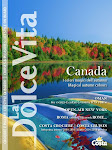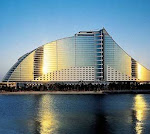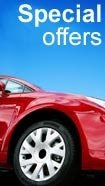The current economic boom in China started off right here: in busy commercial Hong Kong and in the city-state of Singapore, devoted to business, technology and highly specialized electronics.
When Beijing was still undecided between a policy of gradual progress and the relentless development that is now occurring, Chinese, European, Filipino, Indian, Portuguese and American businessmen were meeting in Hong Kong; and in Singapore, the most important companies in world finance filled ultramodern skyscrapers.
There are 236 islands in the South China Sea united in this “Special Administrative Region of China”, which was the name given to Hong Kong after 99 years of lease to the United Kingdom, which began after the Second Opium War.
There are 236 islands in the South China Sea united in this “Special Administrative Region of China”, which was the name given to Hong Kong after 99 years of lease to the United Kingdom, which began after the Second Opium War.
The year was 1997, and the city’s return to mainland China had caused dozens of companies, industry leaders and rich foreigners to leave, worried about being sucked into the slow pace of Chinese development. Instead, the government of Beijing stunned the world, and today the capital, even more so than Shanghai, is the most incredible and original example of how to chase Western market economies.
Hong Kong, having lost a lot of supremacy in terms of trade and profits, is still a fascinating emblem of a great period of history. A city of bright lights that can be admired from the Peak Tram, the city’s oldest means of transport that takes you up to Victoria Peak, 552 metres above sea level. Alongside the impressive port, the largest concentration of shops and shopping centres anywhere in the world and the hi-tech airport, Hong Kong still has old colonial traits and examples of its Cantonese identity: English place names and double-decker trams, shops selling dried fish and ancient medicinal remedies; temples and skyscrapers, limousines and fishing junks.
Seven million inhabitants in all, but the centre of the region, naturally, is the island of Hong Kong (15 kilometres by 11), where the oldest built-up areas are, as well as the highest density of population, but still with plenty of green areas, hiking trails and beaches.
Victoria, a neighbourhood that was named after the Queen at the time, is the heart of the island. This is the departure point of the Star Ferry, which was inaugurated in 1898, and sails for ten minutes to the Kowloon Peninsula, the cultural centre of the region, with wonderful museums. The view during the brief crossing is spectacular, and takes in some of the most aggressive architecture of modern, industrial and hi-tech Hong Kong, with impressive headquarters of banks, financial institutions and the Stock Exchange and Treasury buildings.
Victoria, a neighbourhood that was named after the Queen at the time, is the heart of the island. This is the departure point of the Star Ferry, which was inaugurated in 1898, and sails for ten minutes to the Kowloon Peninsula, the cultural centre of the region, with wonderful museums. The view during the brief crossing is spectacular, and takes in some of the most aggressive architecture of modern, industrial and hi-tech Hong Kong, with impressive headquarters of banks, financial institutions and the Stock Exchange and Treasury buildings.
On the island is also the ancient temple of Man Mo (on Hollywood Road, just to reinforce the contrast), which dates back 150 years, famous for its big incense coils hanging from the ceiling. The temple is dedicated to the Taoist gods of literature (Man) and martial arts (Mo), depicted on the main altar.
Following the theme of tradition, not too far from Hollywood Road on Tai Ping Shan Street, is a group of small temples that are still very popular among the inhabitants of this ancient Chinese settlement. In the port of Aberdeen you can admire a floating village of boats – junks and sampans – which are the home and workplace of as many as 6,000 people, 10 % of the population of the town. It used to be a pirates’ den, and today it is inhabited by peace-loving fishermen who don’t want to be part of the hectic pace of the nearby metropolis.
On the south side of the island of Hong Kong, worth visiting is the town of Stanley, which attracts tourists with is bustling covered market that sells everything from all types of souvenirs and traditional local clothes to objects and linen for the home. Not too far from there is relaxing Stanley Beach, lined with many restaurants. The contrast continues, with the nearby temple of Tin Hau, dating back to 1767, and surrounded by a square full of shops. On the coast is Murray House, now a shopping centre: a pretty banal end for one of the most ancient colonial buildings in Hong Kong; it was transferred here from Central, where it had to make room, unsurprisingly, for the Bank of China.
The Republic of Singapore has been independent since 1965 and is part of the Malaysian Federation. A city-state on the Equator, it has a population of about four and a half million people, three and half million of whom live in the ultramodern capital.
The history of the city has always been tied to trade and finance, since the area has no raw materials.
The Republic of Singapore has been independent since 1965 and is part of the Malaysian Federation. A city-state on the Equator, it has a population of about four and a half million people, three and half million of whom live in the ultramodern capital.
The history of the city has always been tied to trade and finance, since the area has no raw materials.
Even its name – which means “city of the lion” – suggests a remarkable national pride and an aggressive political stance, although the area was first part of the powerful kingdom of Sumatra, and subsequently, from the middle of the 13th Century, a vassal state of the empire of Java, and then later part of the Sultanate of Johor. In 1819 the British started arriving, and they turned it into an important outpost for their trade fleet, as a way of thwarting the colonial ambitions of the Dutch. The colonial city flourished under Sir Stamford Raffles, an officer of the East India Company, who, in February of the same year, signed an agreement – that took his name – with the Sultan of Johor to establish a British settlement.
Its fame as a seedy port, with opium dens, pearl fishers and pirates, is shrouded in legend. What appears today is a skyline of skyscrapers that are home to the largest trade and finance centres in Asia. Yet, in the whole of South East Asia, it is in Singapore that you can still find evidence of great Asian civilisations.
The melting pot of Chinese (77% of the population), Malay and Indians means that Singapore also has its own Chinatown, a Little India, and even an Arab Street, with a muezzin chanting from the Sultan Mosque: every ethnic group has its own markets, holidays and restaurants, in a flourish of events and festivities that bring the city to life. But Singapore is also a city of architecture, gardens and museums. Colonial Singapore is well worth a visit. The Empress Place Building is an impressive Victorian building dating from 1865, which today contains shops and art galleries. Not to be missed is the Raffles Hotel, the symbol of an age that brought together exotic luxury and colonial elegance. Jurong Town, east of the centre, is a dense industrial area, which does however have a number of attractions, such as the Haw Par Villa, a very kitsch park dedicated to Chinese mythology, the fabulous Bird Park, the Chinese and Japanese Gardens, and the Singapore Science Centre.
For a concentrated taste of all of this - museums, beaches, restaurants, horse riding, aquariums – visit Sentosa Island, which is very busy on holidays, the genuine Central Park of Singapore.
Gastronomic gems
Both Hong Kong and Singapore offer the opportunity of tasting cuisines from all over the world in the many international restaurants that are as common as the traditional ones. Among the specialities of Chinese cuisine in Hong Kong are Cantonese dim sum (fried or steamed ravioli and dumplings with a number of different fillings), Peking duck, Chiu Chow cuisine and spicy Szechwan cuisine. Regional Cantonese cuisine is the most common in Singapore, where seafood is very popular. Not to be missed is the delicious chilli crab, in a spicy tomato sauce and served with a small hammer to break the shell. Among other traditional dishes are braised pork with soy and spices (babi pong tay), chicken stew with black walnuts (buah beluak byam) and a mixture of about ten different vegetables cooked in spiced coconut milk (chap chye lemak). Laksa, a spicy soup with coconut milk, noodles, tofu and bean sprouts, and chicken with steamed rice are probably the most popular dishes. Desserts are very colourful and sweet.
Tai Chi: meditation and movement
Tai is a Chinese word that means high or tall, whereas Chi means energy, strength, breath. So Tai Chi is the strength or energy that allows us to reach a state of supreme well-being. According to Chinese medicine, the human body has twelve channels and eight main points through which Chi flows. The 12 channels are like rivers that distribute Chi through the body and link the extremities with the internal organs. The eight main knots can be compared to small reservoirs that control the distribution and circulation of Chi in our body. When there is an imbalance or an interruption in the circulation of this energy, then an illness appears. The flow of events is controlled by the interchange of two opposing forces, Yin, passive force, and Yang, active force. Tai Chi is based on passing from a state of Yin to one of Yang, or vice-versa. The consecutive movements form a harmonic dance that rebalances the body’s energy.
Not to be missed
In Hong Kong
- Victoria Peak. A tower located on the island of Hong Kong from where you can enjoy a truly spectacular view.
Gastronomic gems
Both Hong Kong and Singapore offer the opportunity of tasting cuisines from all over the world in the many international restaurants that are as common as the traditional ones. Among the specialities of Chinese cuisine in Hong Kong are Cantonese dim sum (fried or steamed ravioli and dumplings with a number of different fillings), Peking duck, Chiu Chow cuisine and spicy Szechwan cuisine. Regional Cantonese cuisine is the most common in Singapore, where seafood is very popular. Not to be missed is the delicious chilli crab, in a spicy tomato sauce and served with a small hammer to break the shell. Among other traditional dishes are braised pork with soy and spices (babi pong tay), chicken stew with black walnuts (buah beluak byam) and a mixture of about ten different vegetables cooked in spiced coconut milk (chap chye lemak). Laksa, a spicy soup with coconut milk, noodles, tofu and bean sprouts, and chicken with steamed rice are probably the most popular dishes. Desserts are very colourful and sweet.
Tai Chi: meditation and movement
Tai is a Chinese word that means high or tall, whereas Chi means energy, strength, breath. So Tai Chi is the strength or energy that allows us to reach a state of supreme well-being. According to Chinese medicine, the human body has twelve channels and eight main points through which Chi flows. The 12 channels are like rivers that distribute Chi through the body and link the extremities with the internal organs. The eight main knots can be compared to small reservoirs that control the distribution and circulation of Chi in our body. When there is an imbalance or an interruption in the circulation of this energy, then an illness appears. The flow of events is controlled by the interchange of two opposing forces, Yin, passive force, and Yang, active force. Tai Chi is based on passing from a state of Yin to one of Yang, or vice-versa. The consecutive movements form a harmonic dance that rebalances the body’s energy.
Not to be missed
In Hong Kong
- Victoria Peak. A tower located on the island of Hong Kong from where you can enjoy a truly spectacular view.
- Po Lin Monastery. Situated on the island of Lantau, the monastery houses the largest statue of Buddha in the world. The monastery is on top of Mount Ngong Ping and affords a superb panorama.
- Kowloon. A tour of the Kowloon Peninsula offers visitors local culture and history, as well as great shopping. Of particular interest are the Bird Market, with beautiful birds, and the Jade Market selling minerals.
- City walks. The best way to get to know Hong Kong is certainly to take long walks or organised tours to explore the most interesting parts of the city.
In Singapore
- The ethnic neighbourhoods. The cultural and cosmopolitan essence of Singapore is very present in fascinating neighbourhoods such as Chinatown, Arab Street and Little India. Each of them has its own unique and intense atmosphere.
- Jurong Bird Paradise. A true paradise for bird lovers. This 20-hectare park contains more than 600 species and 8,000 different birds.














No comments:
Post a Comment